Timofey Mozgov's quiet influence on Cavs makes difference in NBA Finals
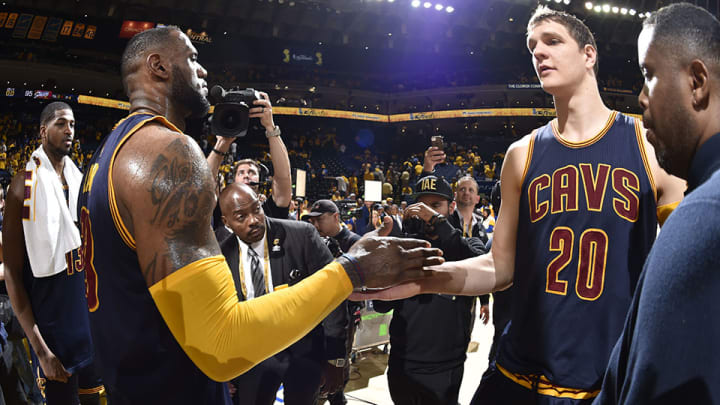
For the ‘grit squad’Cavaliers, the most important work of the NBA Finals is done without the ball. This roster was conceived as an offensive juggernaut built upon the shooting and playmaking ability of its three stars. With two of them sidelined by injury, defense and rebounding have become the new soul of Cleveland basketball. LeBron James orchestrates the offense as only he can. The game around him, though, is won and controlled based on his teammates’ persistence in stalling the Warriors’ actions, plugging away on the glass, and finding ways to frame the offense for situational success.
Timofey Mozgov plays perfectly to that type. A versatile, reliable center is a precious basketball resource demanding of a massive contract. In lieu of one, teams like the Cavs find their own way with hard workers of a more particular skill set. Mozgov isn’t much of a shooter. His lack of lateral mobility limits the ways in which he can cover a pick-and-roll and rules him out from regular switching. He isn’t suited to operate from the post in even a medium-usage capacity and the less he puts the ball on the floor is generally for the best.
- MORE NBA: Cavs stifle Warriors in Game 2 | LeBron adds to legend
The Cavaliers—David Blatt and his staff, the full Cavs roster, and even Mozgov himself—know this. They control his role to work around his limitations, drawing instead from his size and situational advantages to get the rim protection, rebounding, and spot offense this team needs. It’s not a coincidence that Mozgov leads all Cavaliers in raw plus-minus (+7.0) through the first two games of the Finals. His time on the floor brings clear, inarguable value despite the fact that he has actually held the ball for less than a minute per game on average in this year’s playoffs, per SportVu.
Mozgov’s influence on Cleveland’s offense largely comes out in possessions like this one:
Those who only watch the ball might not even see Mozgov. He begins the possession outside the three-point arc, allowing his defender (Festus Ezeli) to hang around the paint and deter LeBron’s post-up. Mozgov combats this by cutting as soon as James clears the ball in the post. Immediately, that move through the paint pries Ezeli out of his help position against James as he now must pay some mind to Mozgov. He still bounces toward James, which then opens up the second layer of Mozgov’s contribution: Because Mozgov is now positioned around the rim as a scoring threat, Andre Iguodala helps down to cover for Ezeli and leaves J.R. Smith open in the process. In a larger sense, Smith is open because of LeBron. Yet if Mozgov had waited out on the perimeter for the play to develop, Iguodala could easily zone up to guard both him and Smith simultaneously while Ezeli drifted around the lane.
Sometimes Mozgov’s pull on a defense can be even more subtle, as was the case on this quick post-up by James out of transition:
When Andrew Bogut runs down the floor to establish his defensive position on this play, he defaults to the top of the restricted area. From that spot he’s able to give Harrison Barnes the help he needs to deal with James down low; should LeBron turn the corner or spin baseline, he’ll then have to find a way around Bogut’s reach.
The unlikeliest postseason storyline? Dellavedova's Finals-saving showing
Mozgov identifies this and moves first to the weak-side box, and then counterclockwise down the baseline as LeBron makes his move. This forces Bogut to keep near Mozgov as to ward off a potential lob, pulling him deeper into the paint and away from the play in progress. James uses that room to get a deeper plant on Barnes before drawing a foul, all as Bogut is drawn a step out of position.
On some teams, Mozgov’s movement on plays like these might go wasted. Some scorers in the NBA are so deeply concerned with their own process that they don’t see the bigger picture of the court’s spacing and the windows that active bigs like Mozgov budge open. This is just part of what makes LeBron a dream pairing for the 28-year-old big man. Not only does James hit Mozgov with quick, timely passes on his cuts:
…but he also understands how to get the most out of all that Mozgov has to offer as a distraction to the defense:
The play in the clip above illustrates a simple pick-and-roll executed from the top of the floor. As Mozgov begins his dive toward the rim, Draymond Green lingers only slightly in his path as he buys Bogut time to recover. James gets the jump on Green by immediately passing out to his assigned man (James Jones) at the three-point line instead. Green is only doing his job. The threat of a Mozgov roll has simply kept him away from his man for a single beat too long, a delay which James identified and exploited.
Their chemistry has allowed for the Cavs’ most dominant runs in the Finals thus far. Through these first two games, lineups featuring both James and Mozgov have scored 102.5 points per 100 possessions—10.5 points higher than Cleveland’s average in the series, per NBA.com. Given that Mozgov is also the Cavs’ best interior defender, it’s somewhat curious that he played only 29 (of a possible 54) minutes in Game 2—fewest among Cleveland’s top six in the rotation. Blatt’s justification was as one would expect: Golden State’s late game tilt toward smaller lineups made it difficult to get Mozgov on the floor.
"Moz played great," Blatt said. "He played extremely well the in first game, too. We played the lineup we thought we needed to play to match up properly with them and at the same time not lose an advantage at the other end. As you guys know, we've played different lineups and used different lineups throughout the course of the year. But the lineup to finish the game is one that's been a winning lineup for us, and that's why we played it."
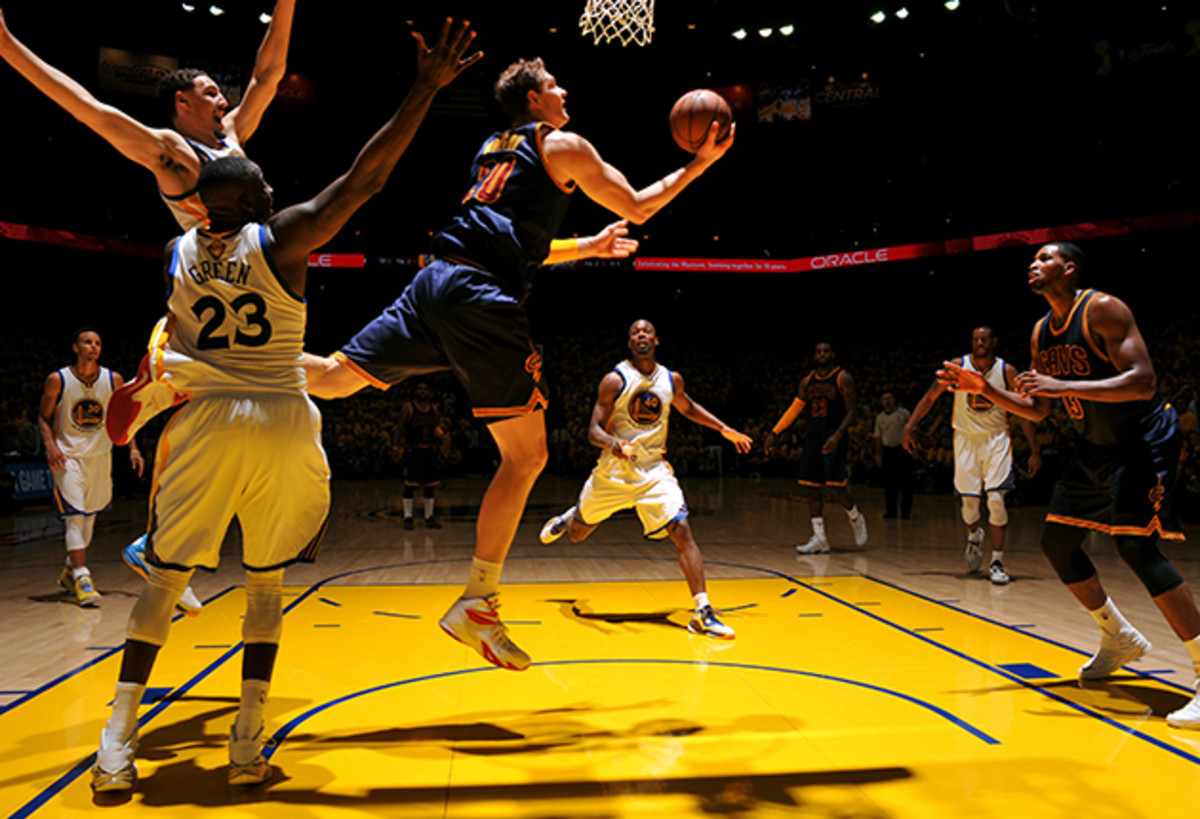
- MORE NBA:Playoff coverage | Finals schedule | Oracle Arena
Mozgov has played just five minutes in this series when neither Bogut or Ezeli—the Warriors’ traditional centers—were on the court. He’s certainly most comfortable when linked to an opponent who doesn’t stray far from the paint, making the potential matchup with Green at the five a bit dicey. Still, Blatt should at least consider adjusting his substitution patterns to get Mozgov more time on the floor against lineups of all kinds. In Game 2, Mozgov played over 10 minutes to start the second half. By the time he was rested and ready to return in the fourth, Golden State had shifted small. Blatt was so concerned about the matchup that he held Mozgov out for the entire fourth quarter and most of overtime.
There are valid reasons why the Cavs have felt more comfortable closing games this season with Tristan Thompson manning the middle, with Blatt’s justifications among them. All the same, the case for Mozgov is becoming too significant, too distinct, and too valuable to ignore. Something within this matchup allows Mozgov to masquerade as a star. Maximizing his opportunity to do so is a matter linked to Cleveland’s astonishing survival.
GALLERY: Sports Illustrated's best photos from Game 2 of NBA Finals
SI's Best Photos From Game 2 of the NBA Finals
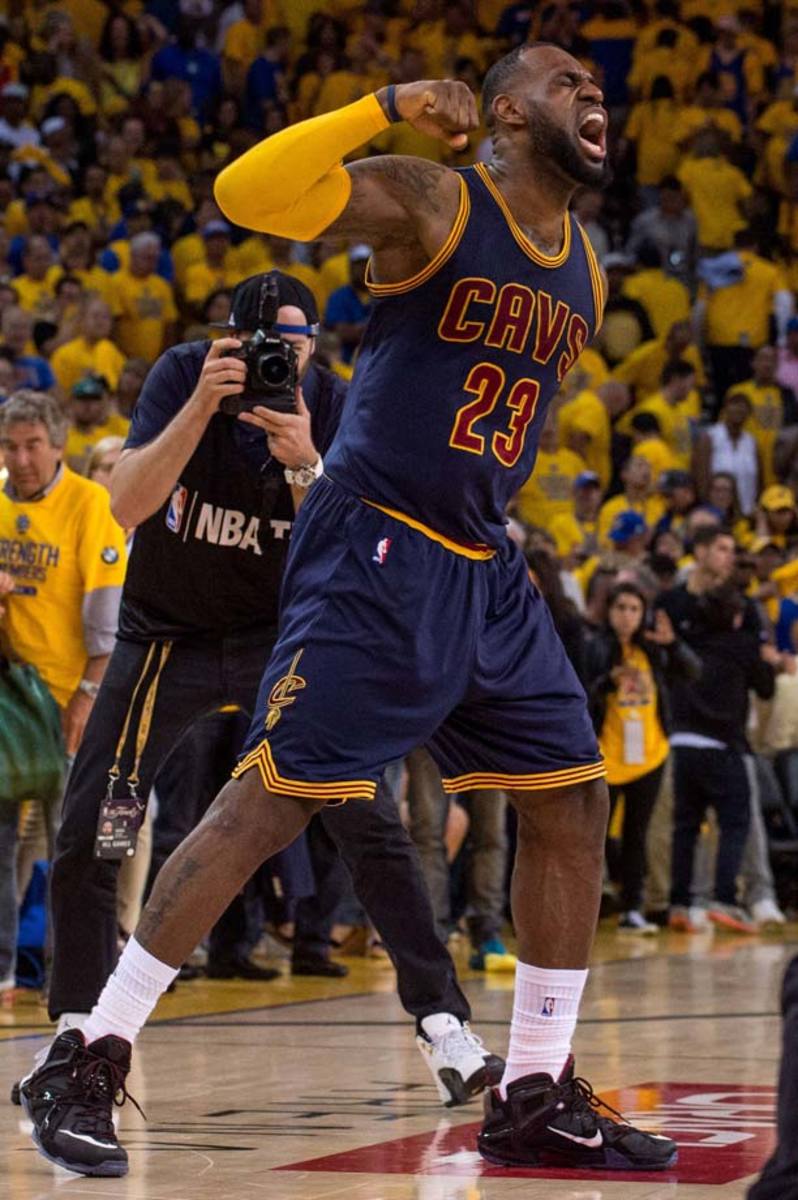
LeBron James celebrates a hard-fought victory, one in which he had a triple double.
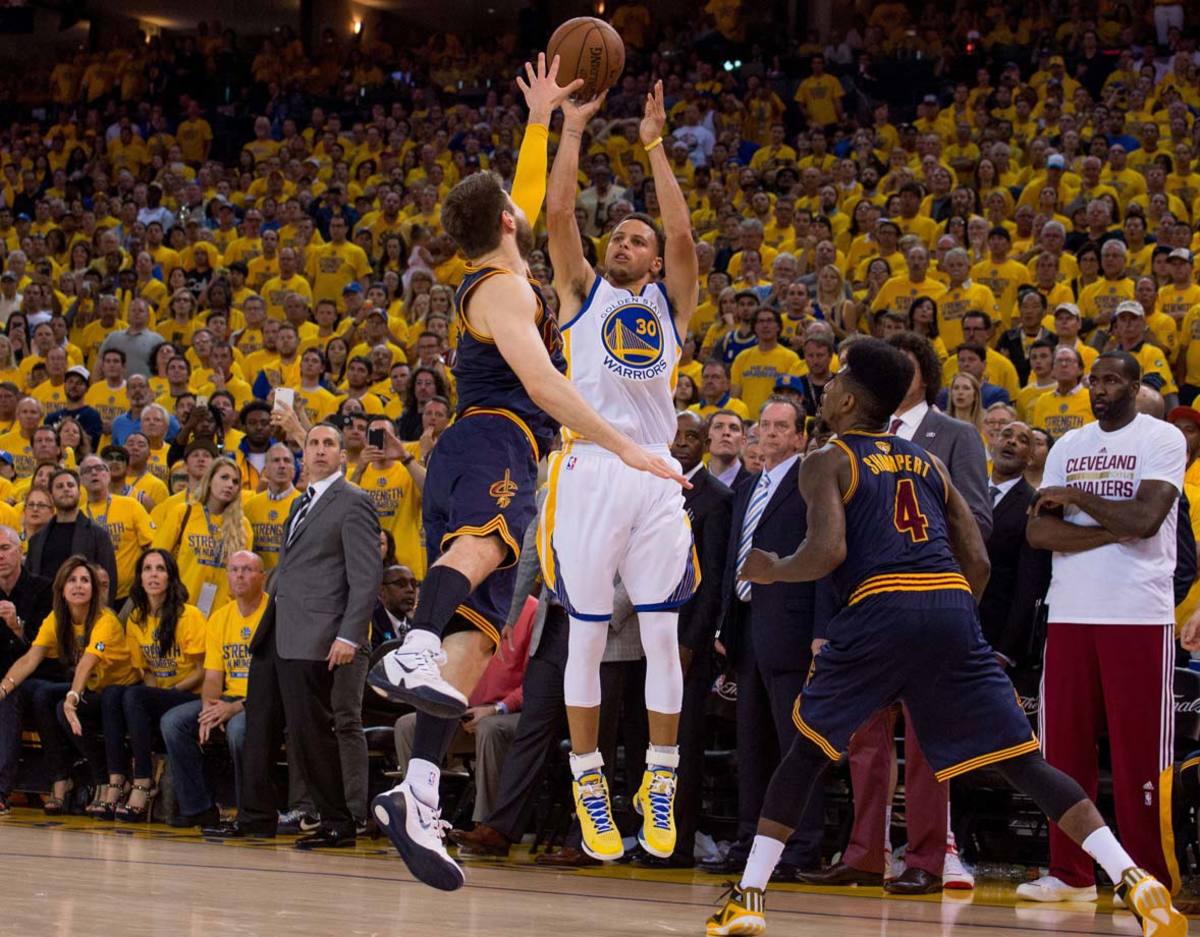
Matthew Dellavedova contests a shot by Stephen Curry in overtime.
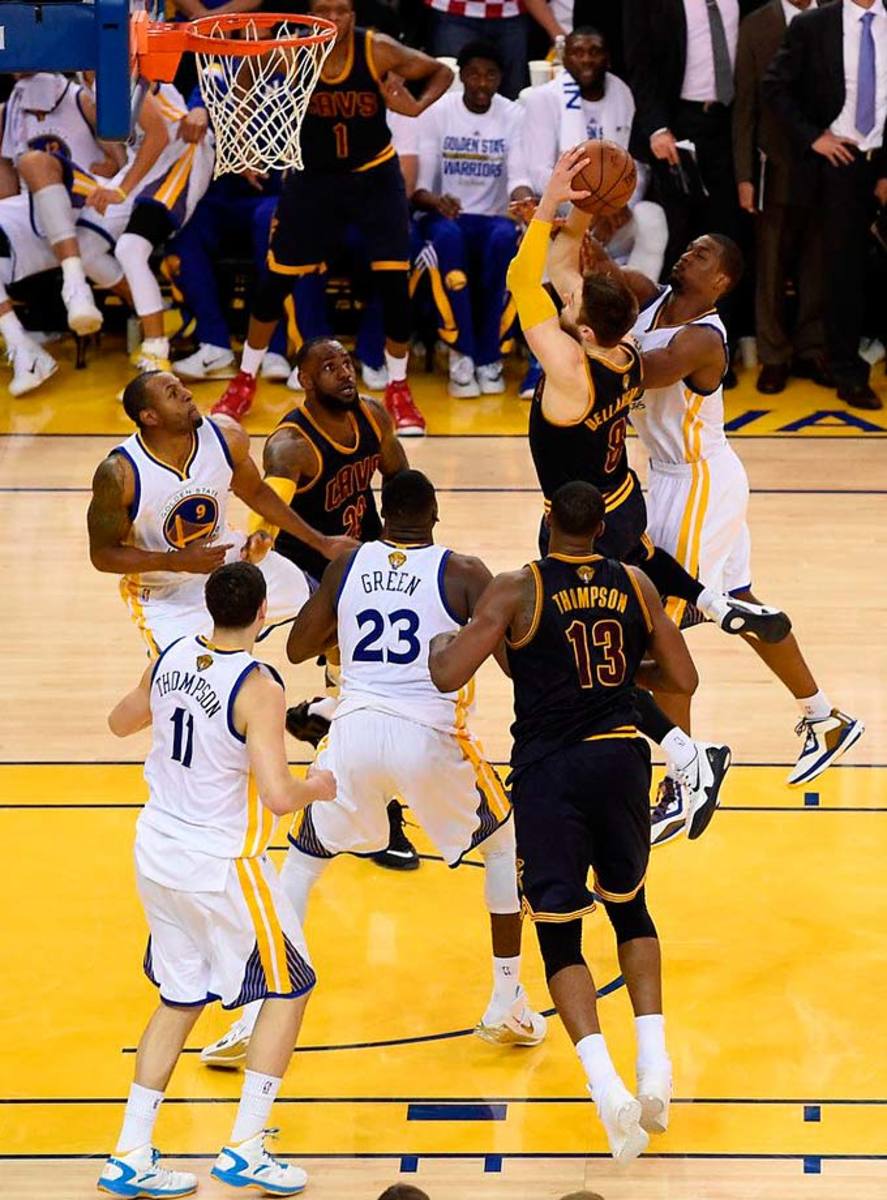
After being fouled on a rebound and shot attempt in overtime, Matthew Dellavedova went to the free throw line and sank the go-ahead points for Cleveland in its 95-93 victory.
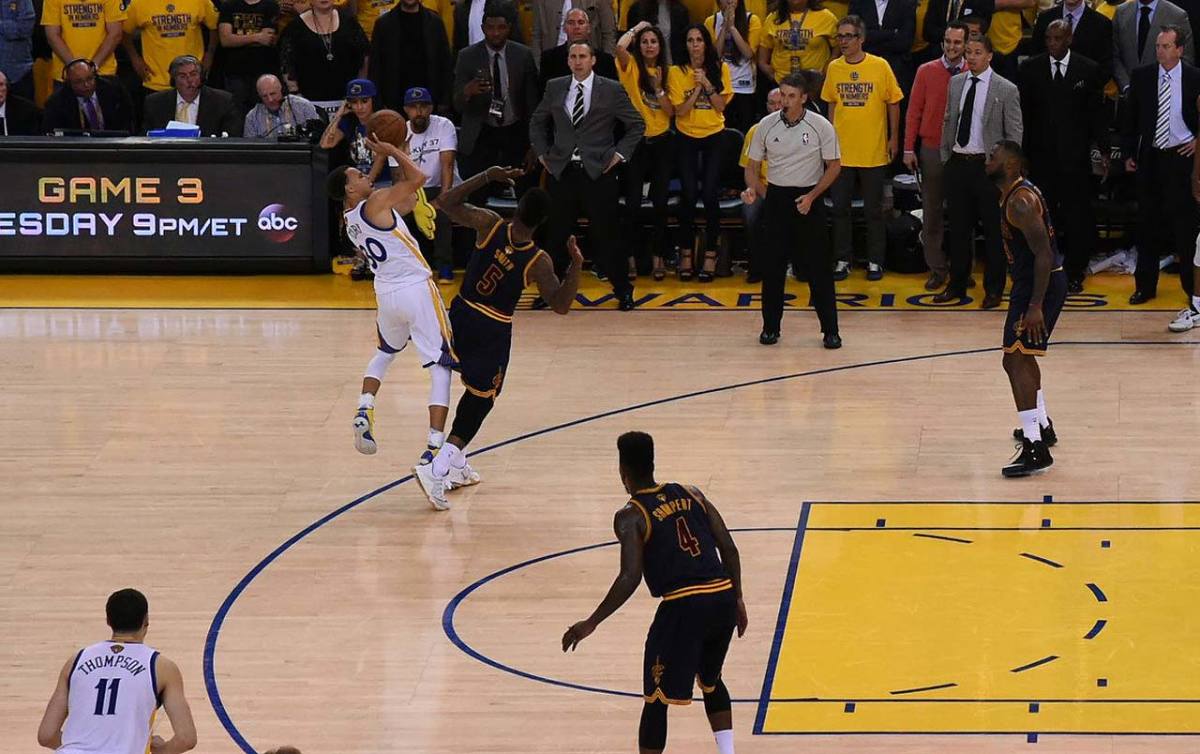
Steph Curry got J.R. Smith to foul out on this play, then put Golden State in front 93-92 on the two free throws with 29.5 seconds left in overtime.
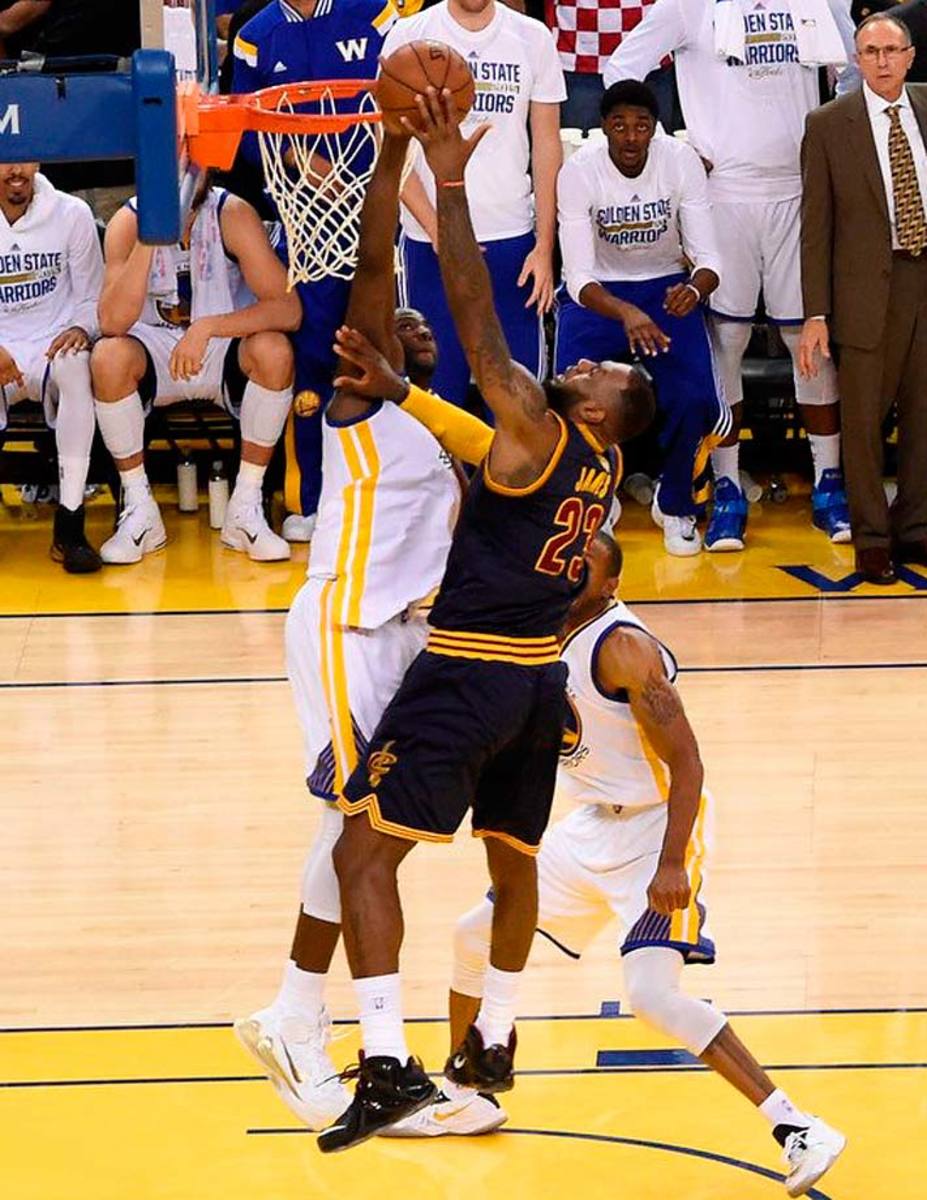
Draymond Green had four blocks, including this one of LeBron James.
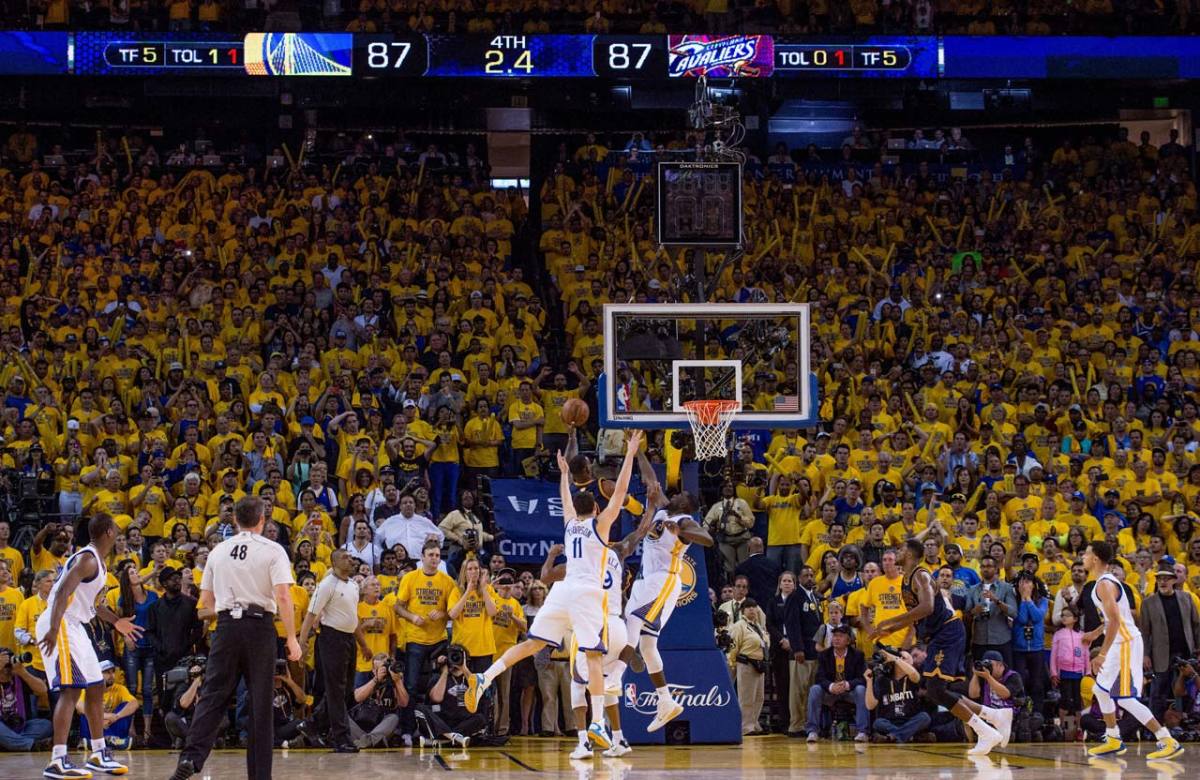
With the game tied and 2.4 seconds remaining in regulation, Golden State harrassed LeBron James into missing this shot.
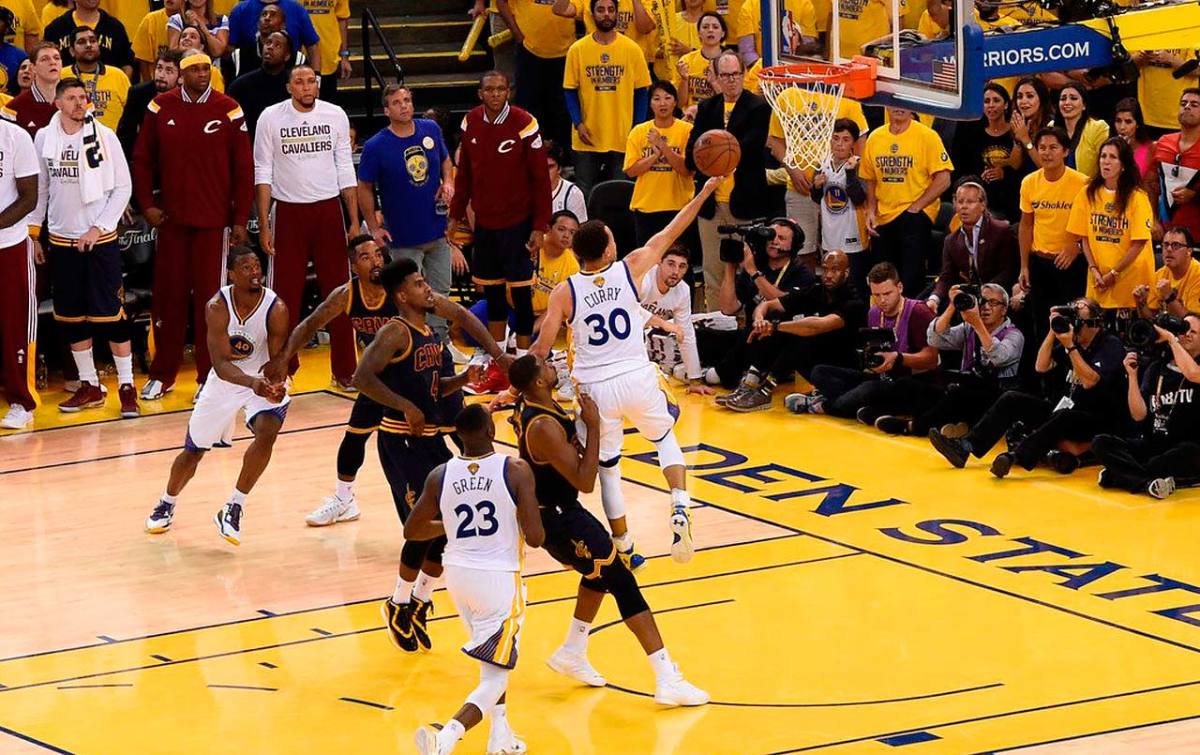
Steph Curry's finger-roll with 7.2 seconds remaining tied the game and were the final points scored in regulation.
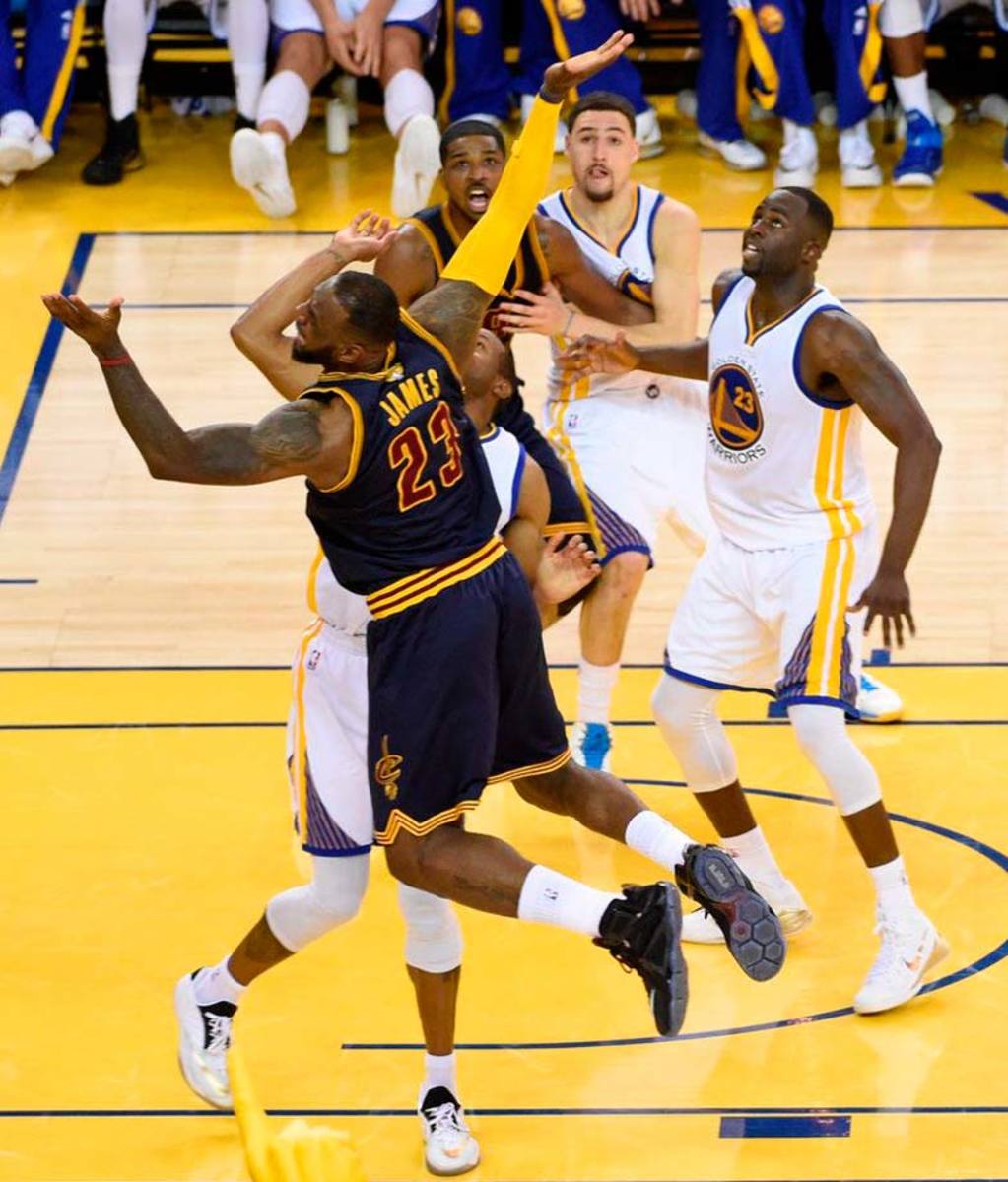
LeBron James got raked across the arm on this sequence but no foul was called.
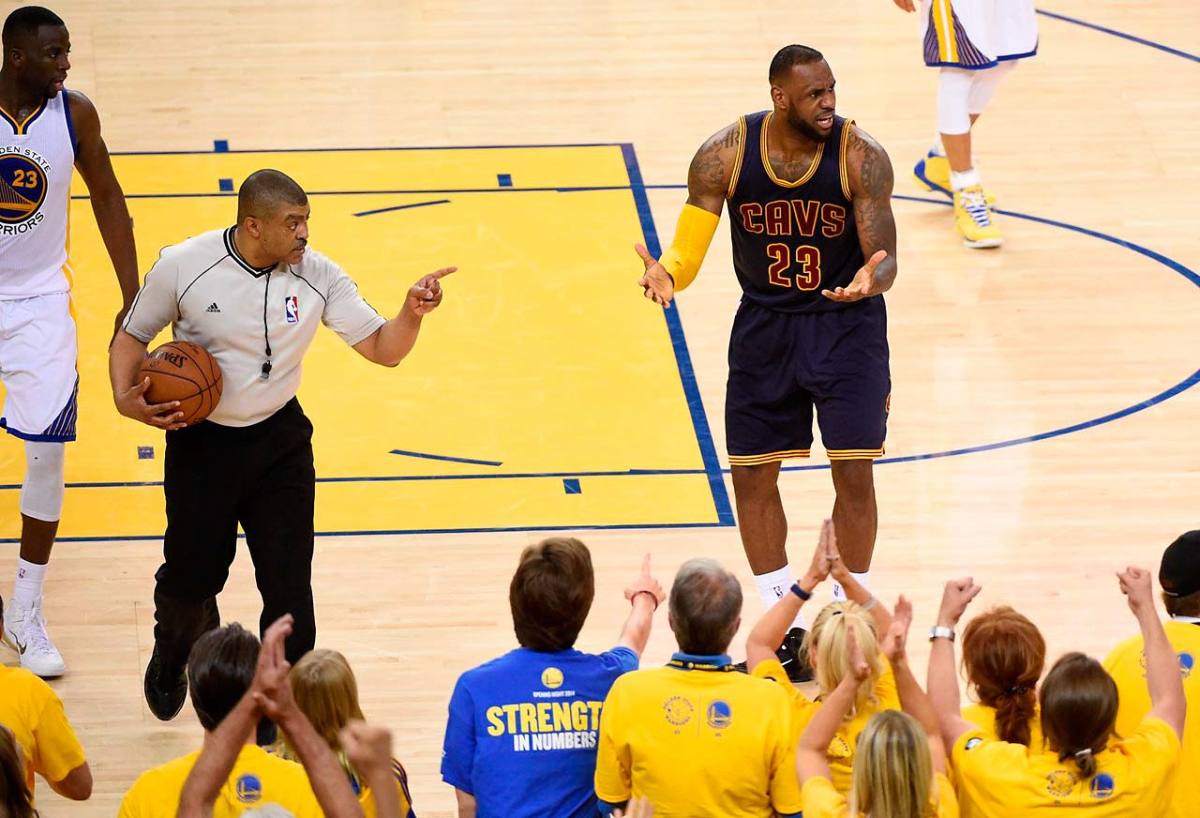
LeBron James couldn't believe some of the non-calls in Sunday's game.
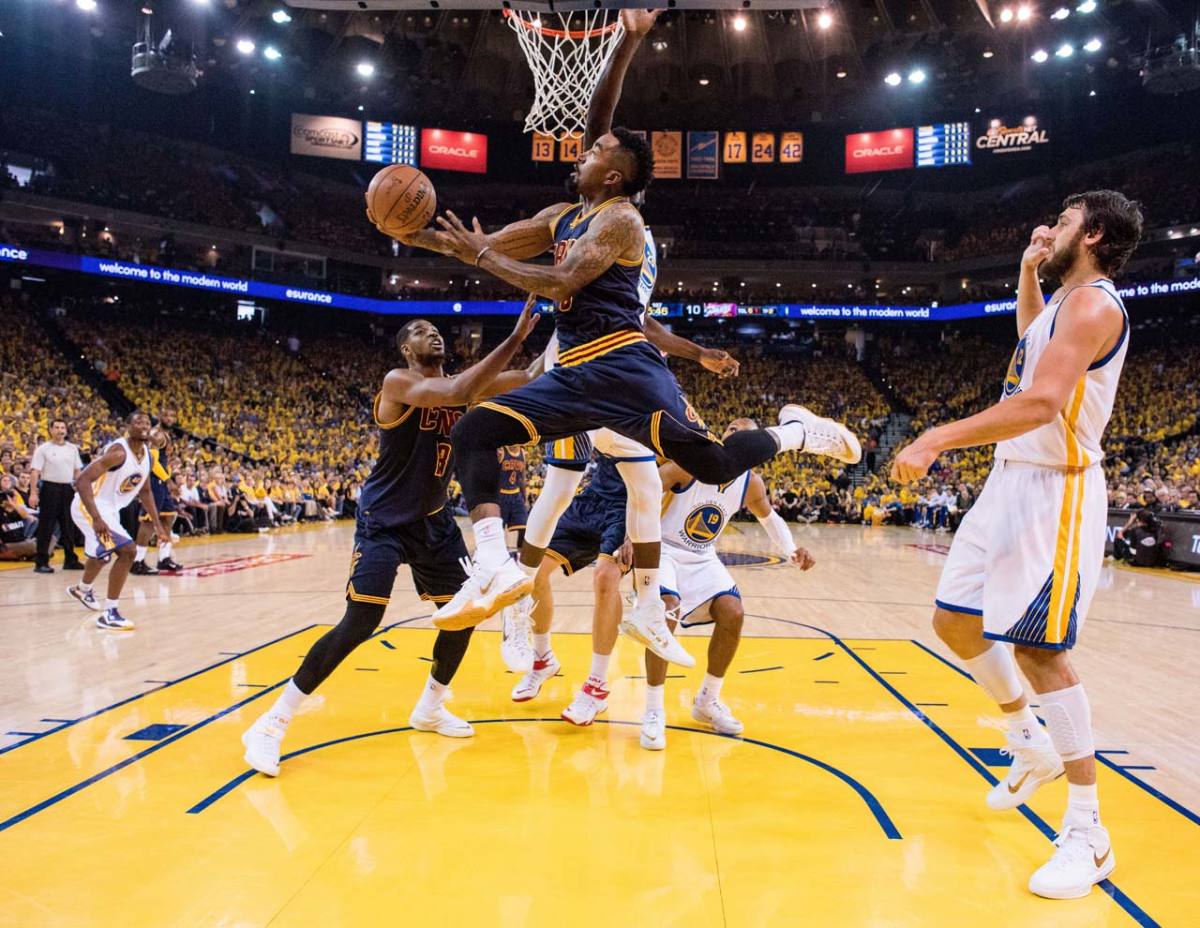
J.R. Smith was more aggressive at attacking the basket now that Kyrie Irving is lost to the Cavaliers for the remainder of the series.
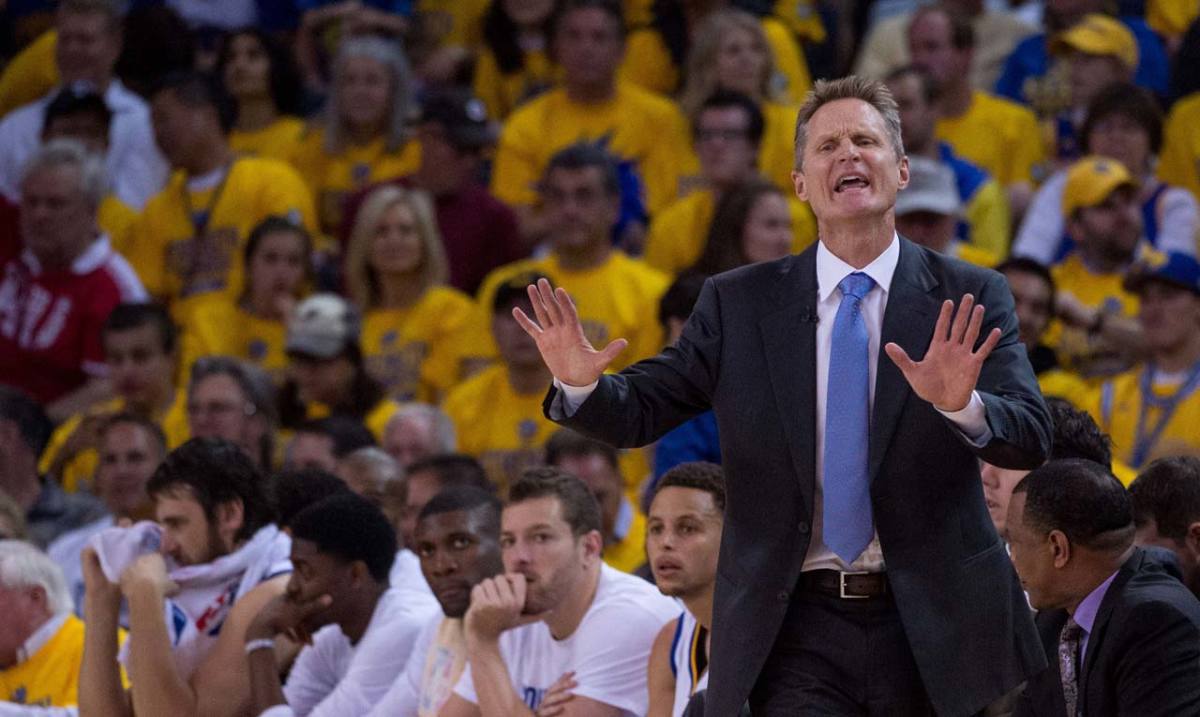
Steve Kerr and the Warriors missed a golden chance to go ahead two games to none.
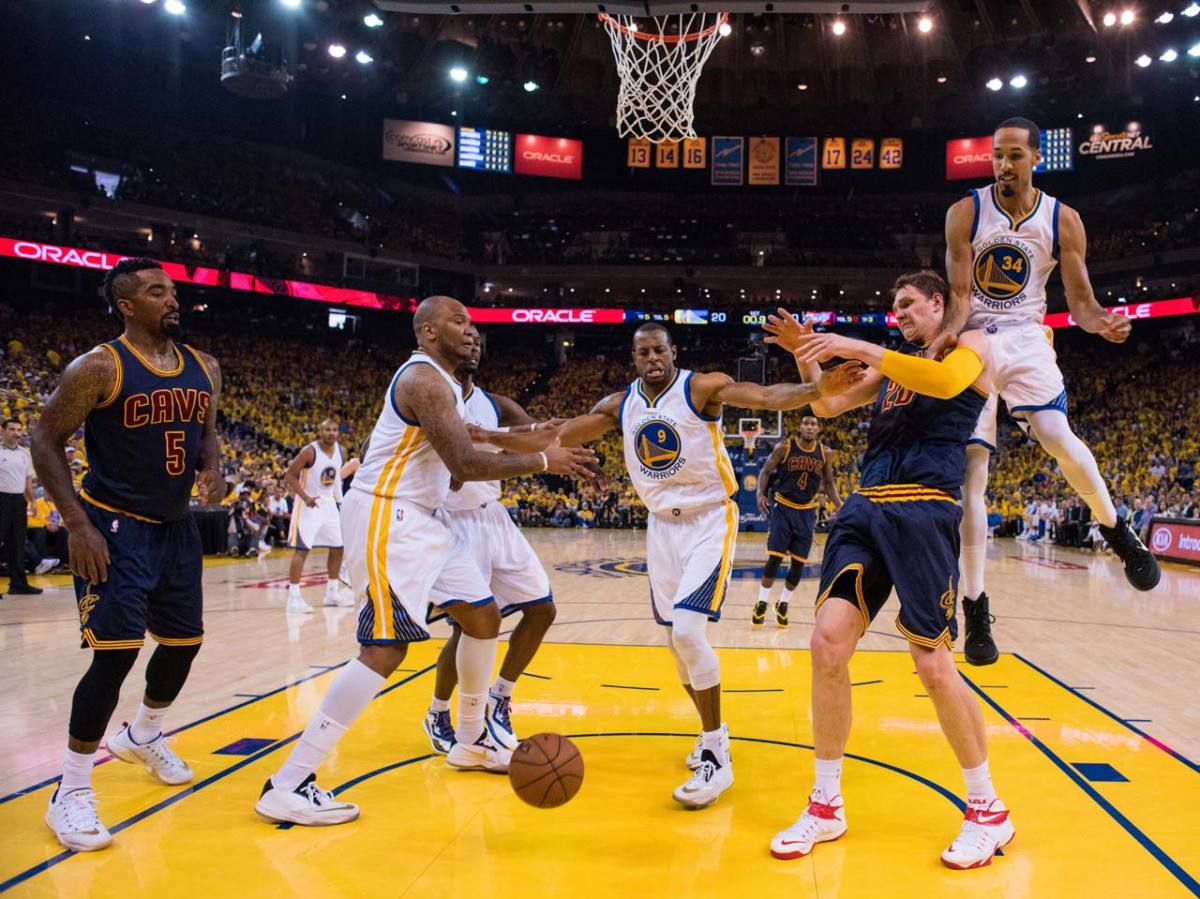
Timofey Mozgov drew a lot of fouls in the lane and made seven of 12 free throw attempts.
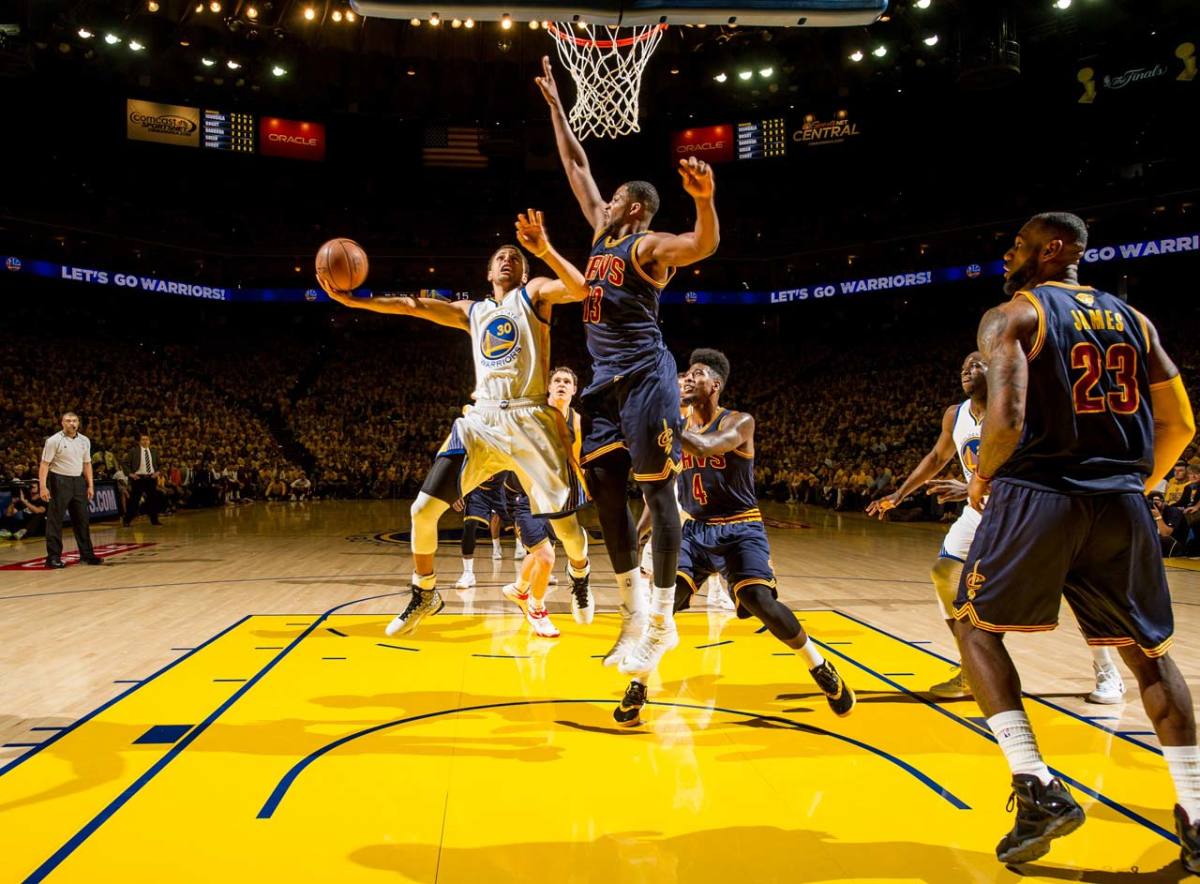
Steph Curry had a horrid shooting night, making only five of 23 attempts. He came up empty on 13 of his 15 three-point attempts.
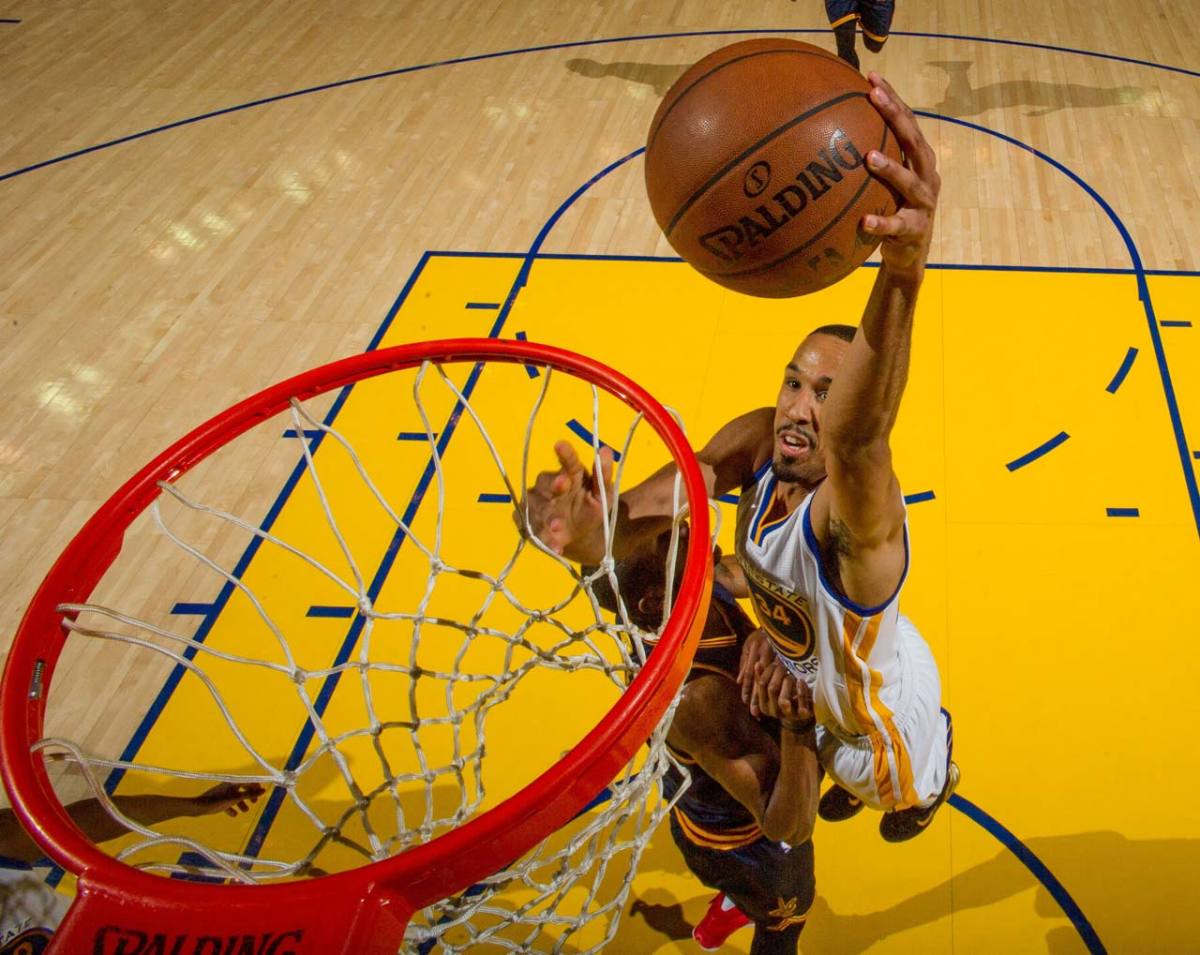
Shaun Livingston scored three points in 14 minutes of action.
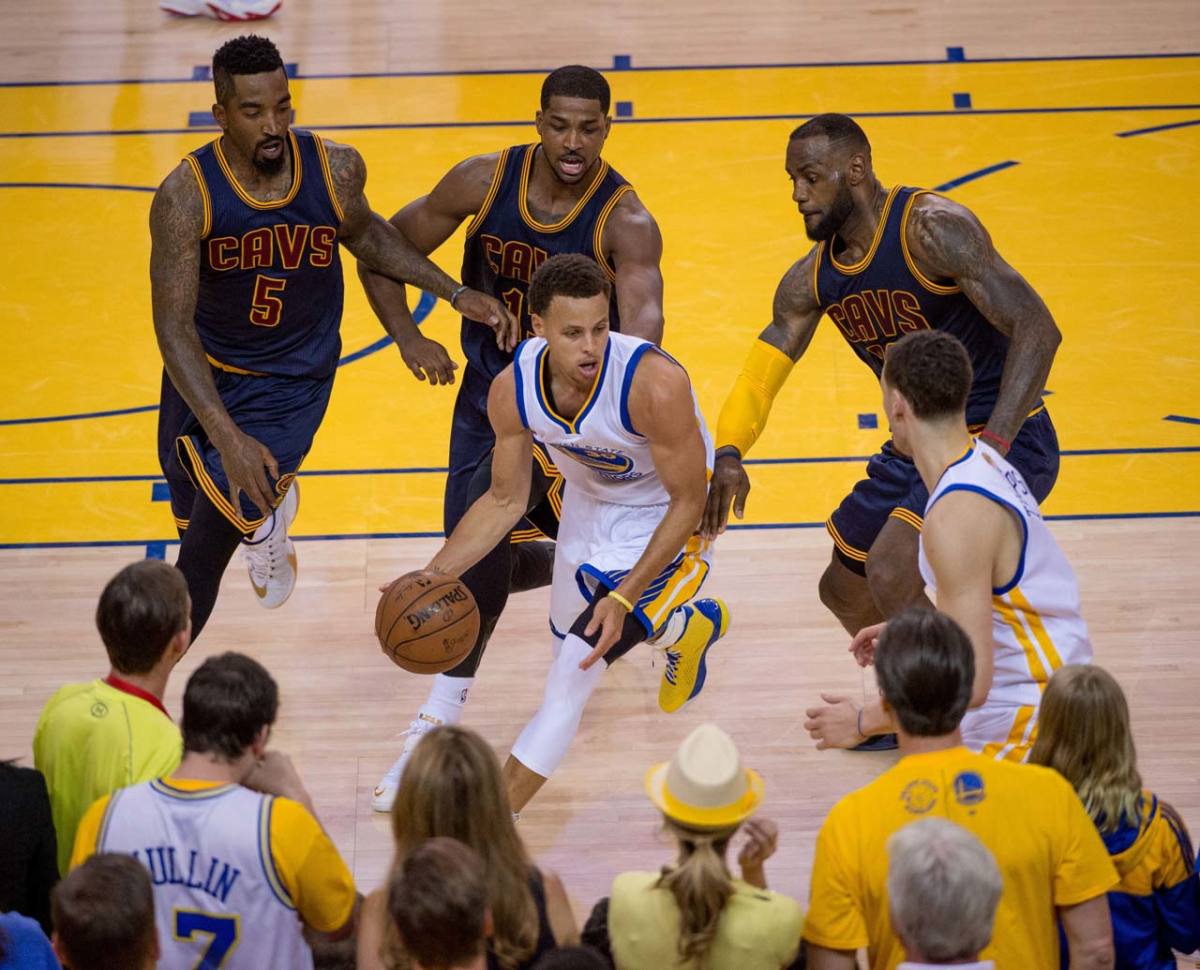
Cleveland's defenders close in on Steph Curry.
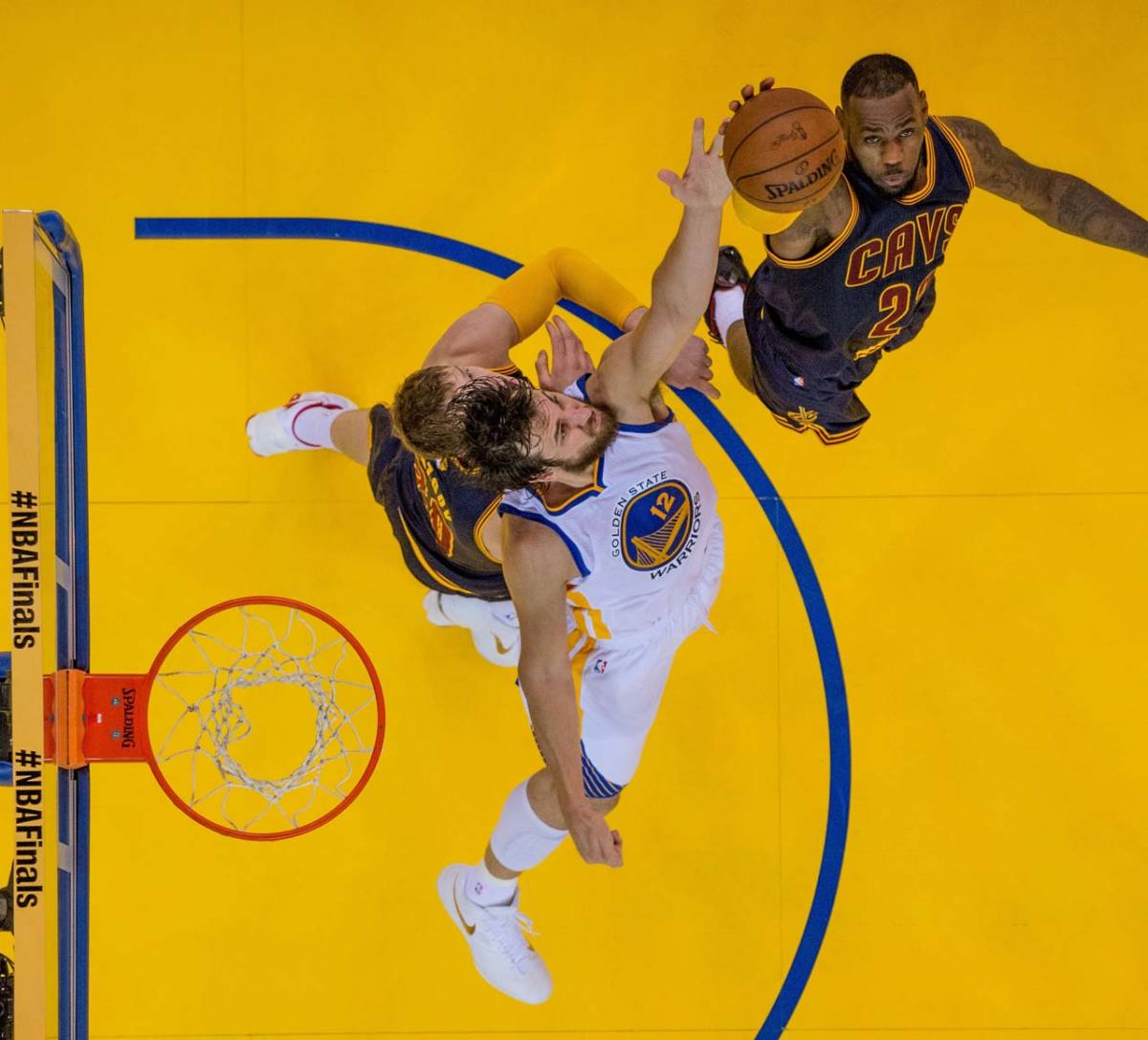
Andrew Bogus battles LeBron James for a rebound. Bogut finished with 10 on the night while James pulled down 16.
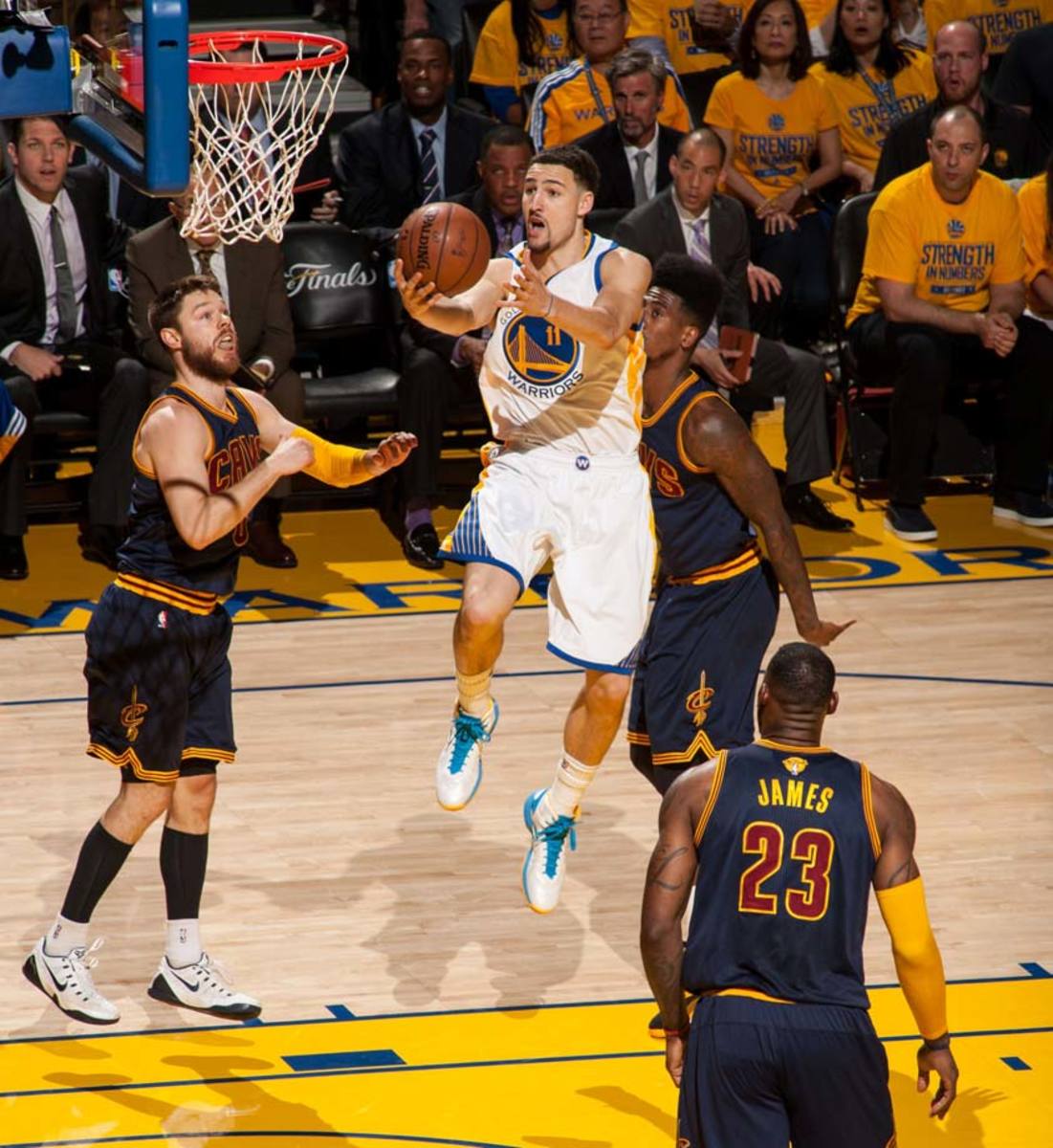
Klay Thompson led the Warriors with 34 points.
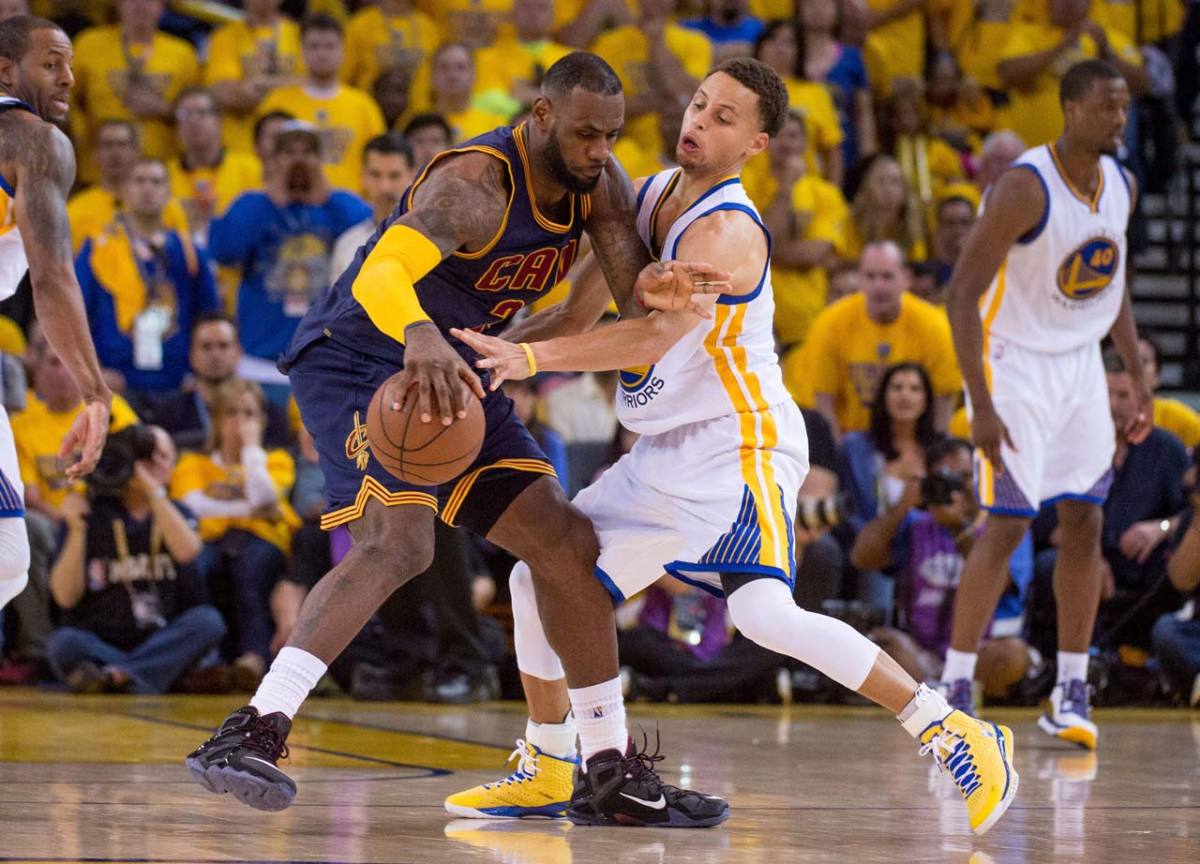
Steph Curry tries to defend against LeBron James.
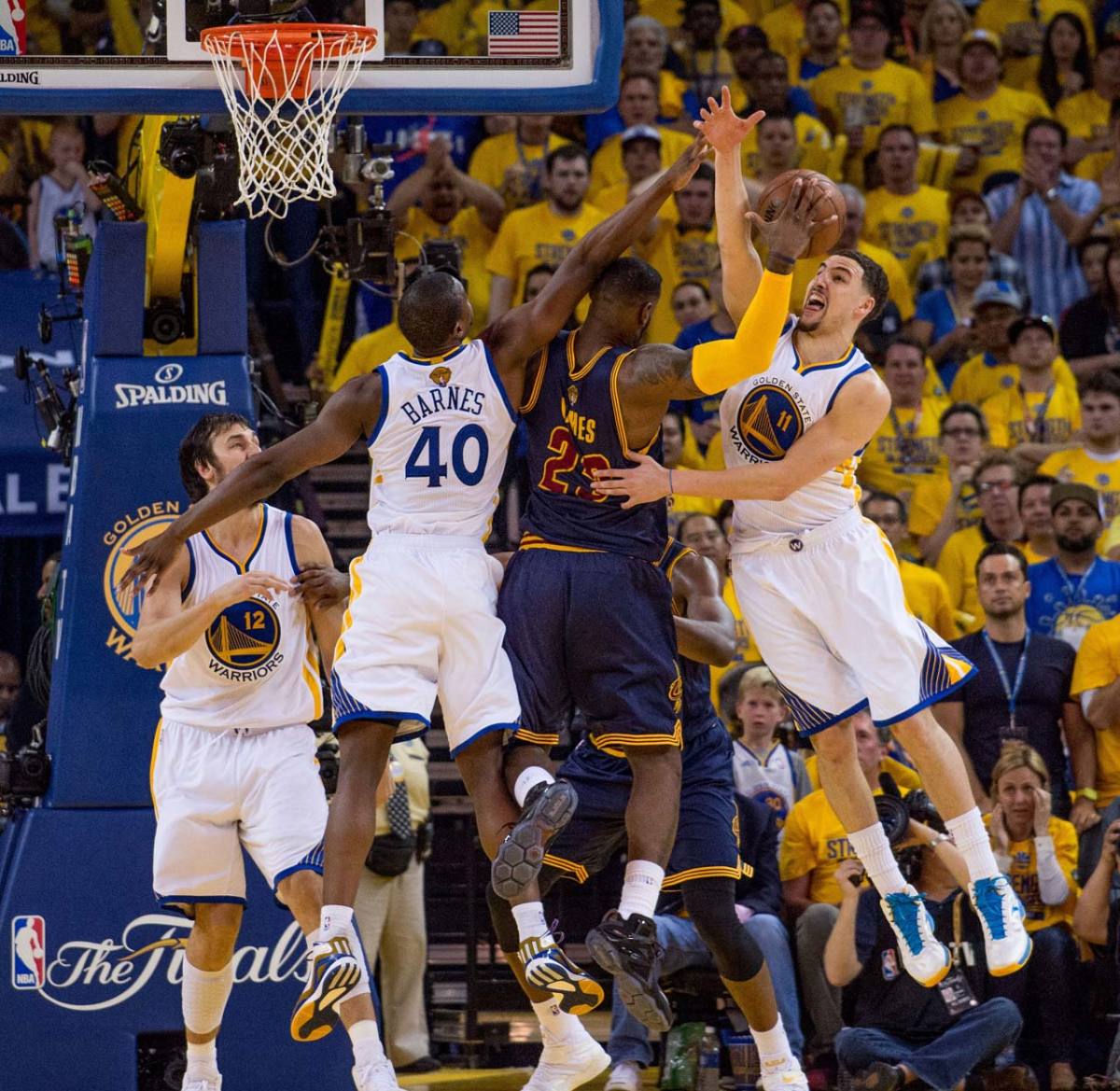
Harrison Barnes and Klay Thompson do their best to try to slow down LeBron James.
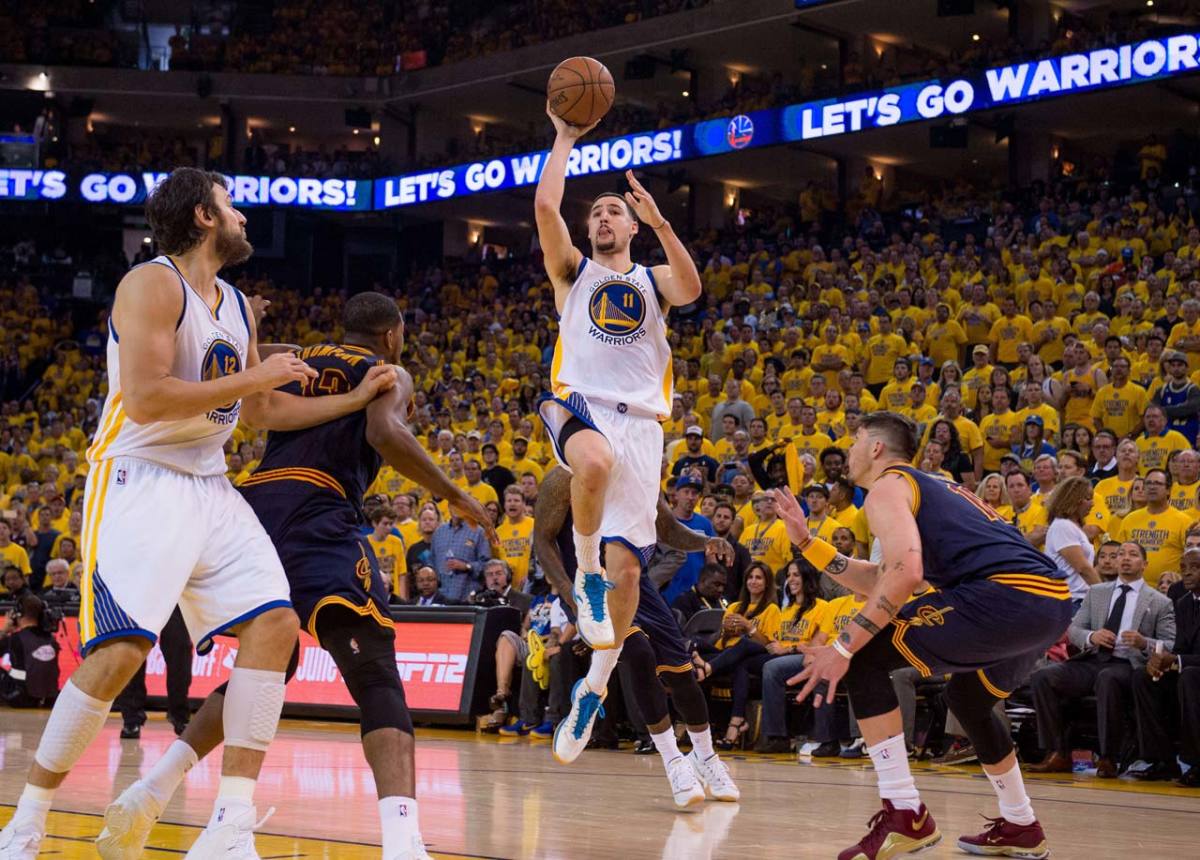
Klay Thompson played a team-high 46 minutes and sank 14 of his 28 shots.
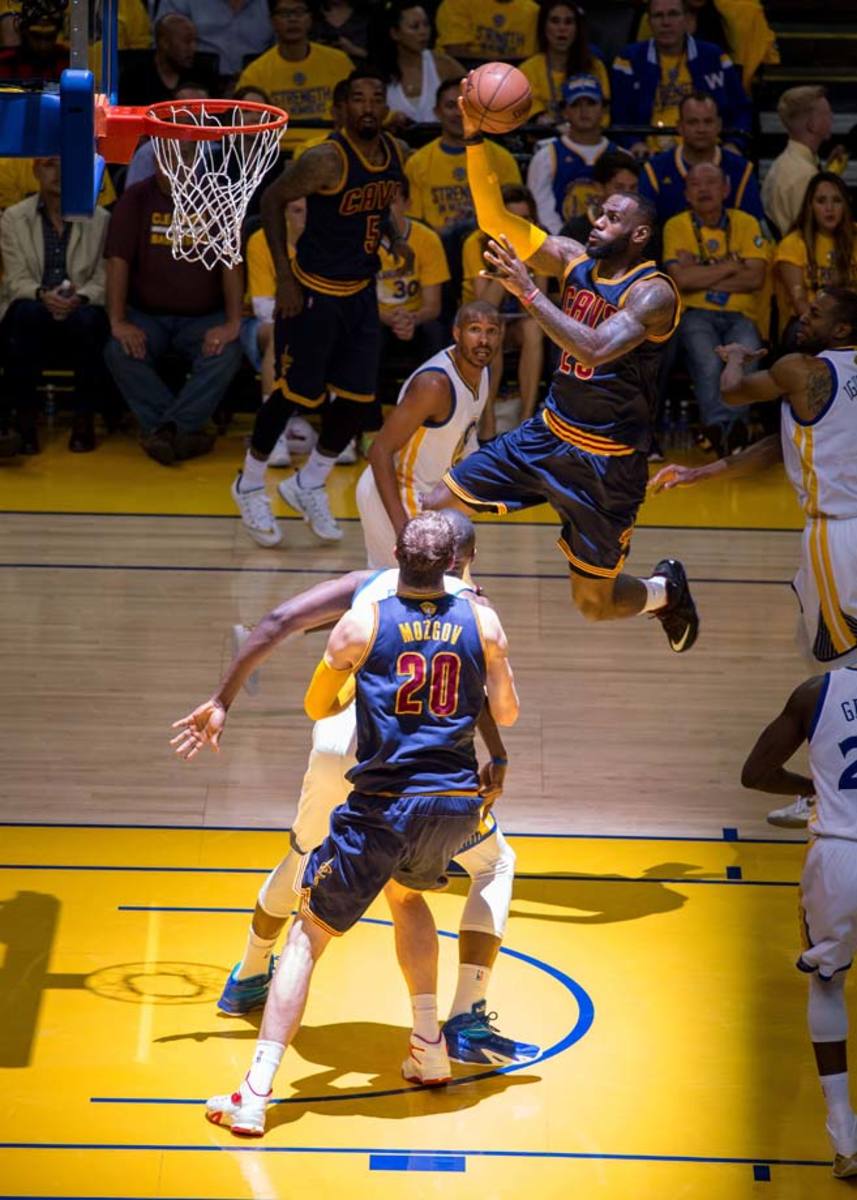
LeBron James finished with 39 points, 16 rebounds and 11 assists in 50 minutes.
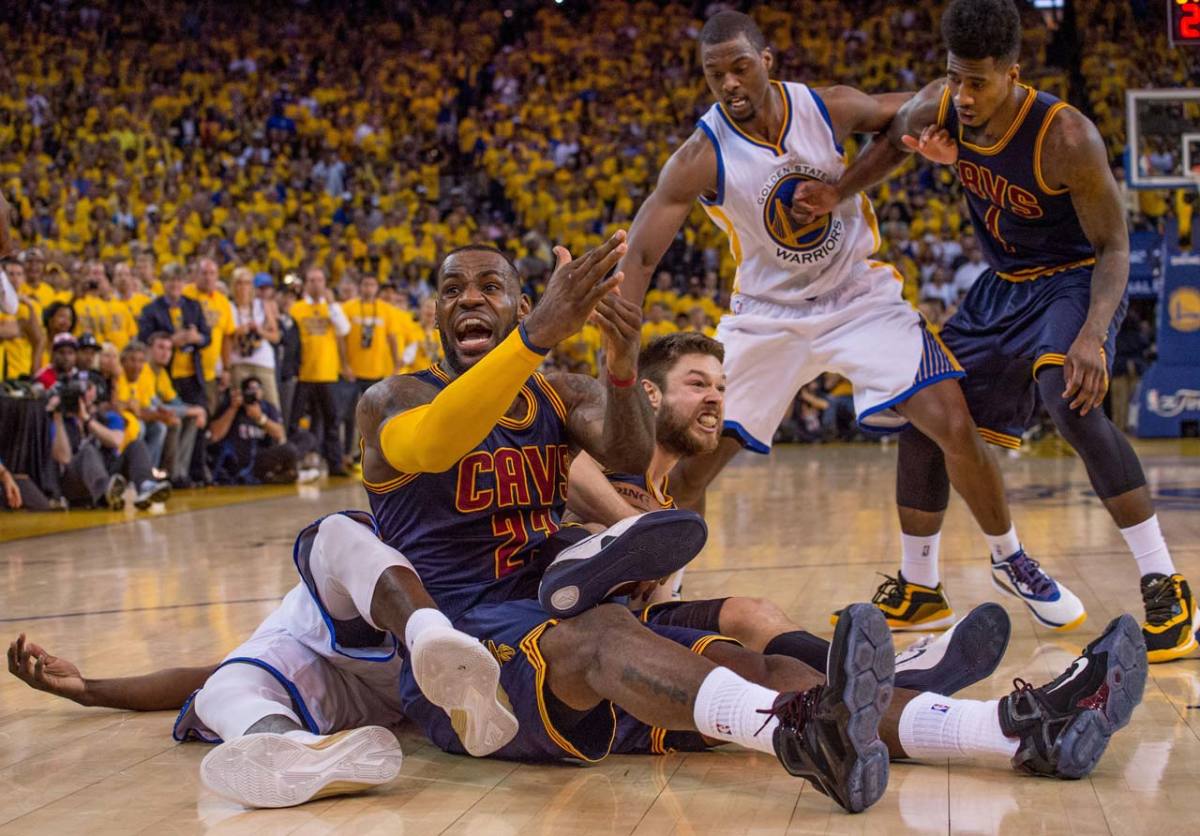
''It's the grit squad right now,'' LeBron James said of the undermanned Cavaliers. ''If you expect us to play sexy cute basketball, that's not us right now. Everything is tough and it has to be that for rest of series.''
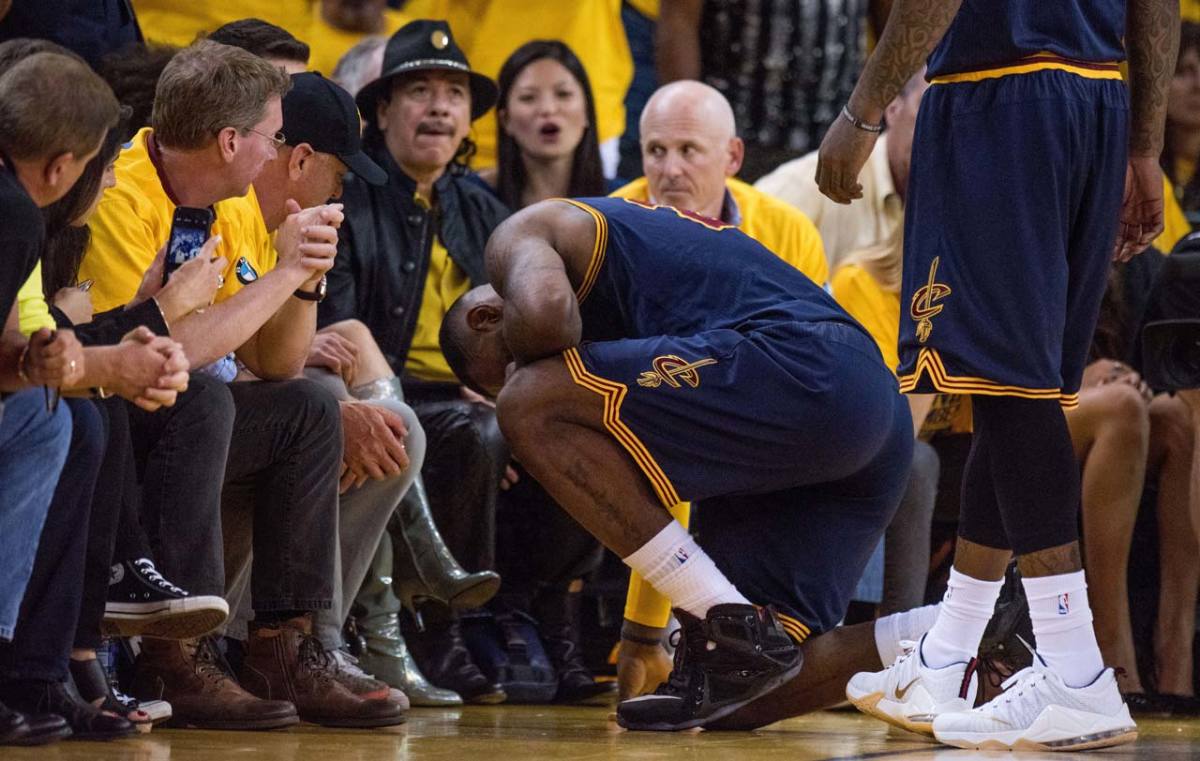
LeBron James took longer than usual to compose himself after getting hit across the nose by Draymond Green on a hard foul in the fourth quarter.
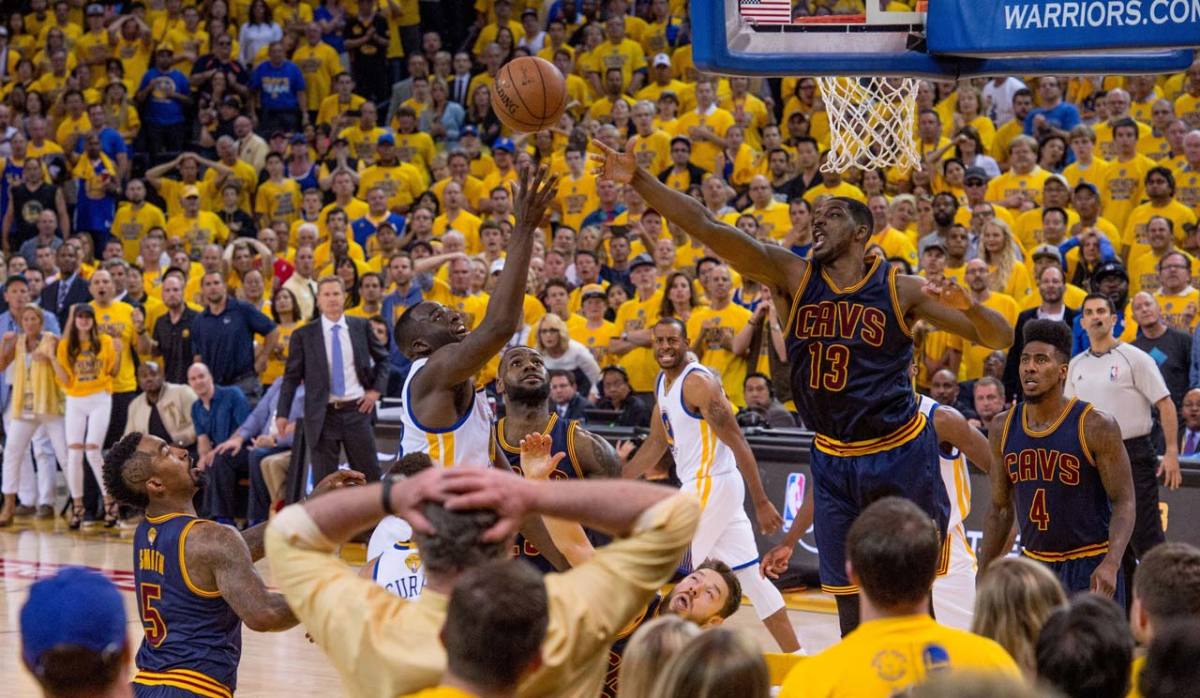
Tristan Thompson attempts to block a Draymond Green shot.
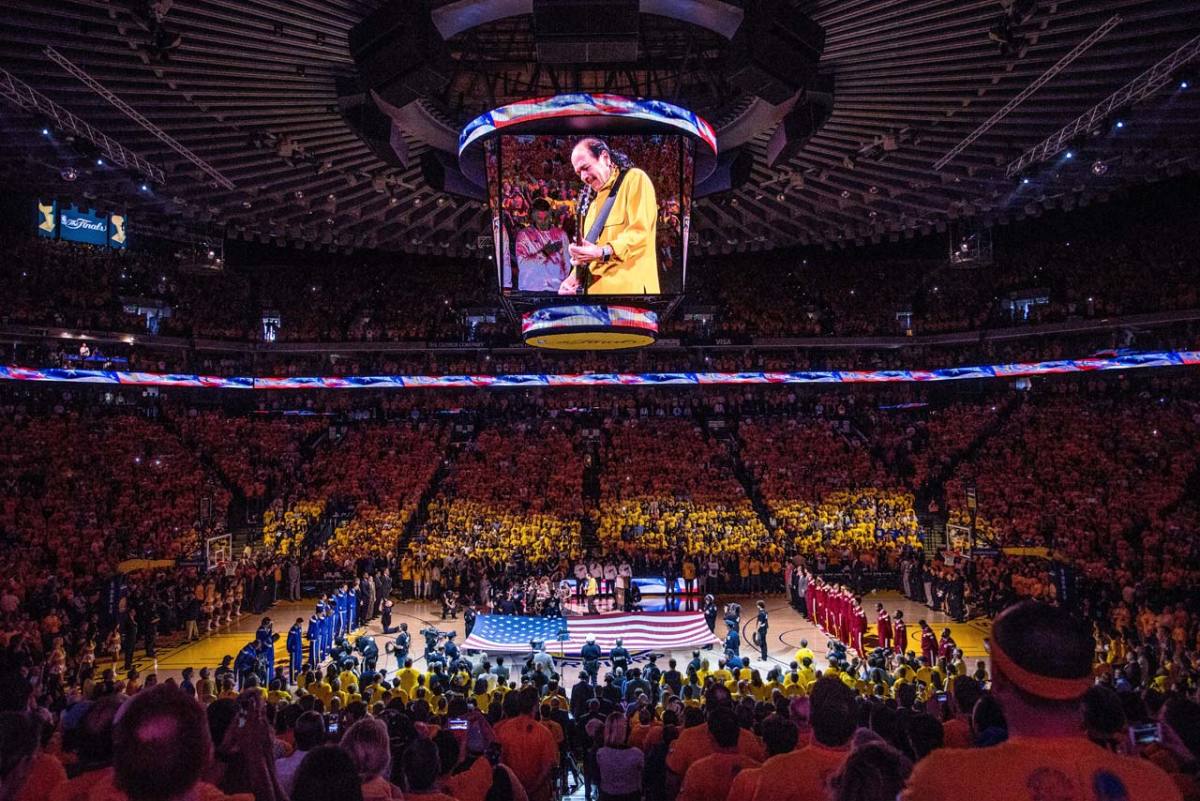
Bay Area native Carlos Santana performed the national anthem before Game 2 at Oracle Arena.
